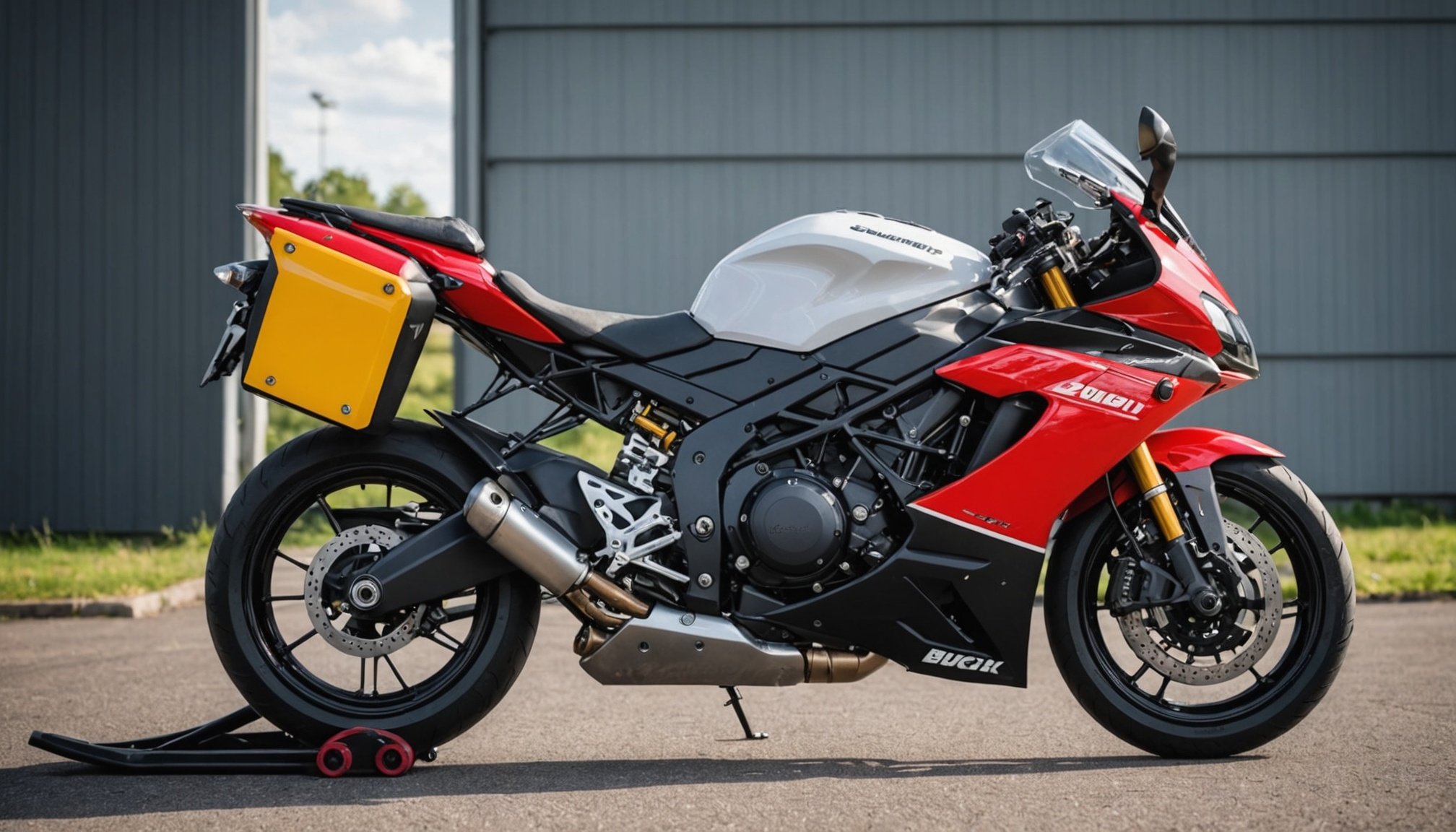Understanding the Power Commander
The Power Commander is a transformative tool for motorcyclists seeking to enhance fuel performance in their sport bikes. It serves as an electronic control unit that optimizes the air/fuel ratio in the engine, empowering riders with improved performance and efficiency. By allowing fine-tuning, it adjusts the fuel delivery for smoother rides and optimal power.
One of the key benefits of utilizing a Power Commander is the ability to modify the fuel injection settings without permanently altering the bike’s ECU (Electronic Control Unit). This enhancement allows for personalised adjustments tailored to different riding styles and conditions, ensuring that your sport bike performs at its best, whether on the track or the road.
Also to read : Essential sport bike glove selection for optimal grip in challenging uk wet weather conditions
Compatibility is another crucial aspect of the Power Commander. It caters to a wide range of sport bike models, offering plug-and-play options that make installation straightforward. Its versatility means riders don’t have to worry about major modifications to get the best out of their machines. With the Power Commander, you can unlock potential performance gains across various models, supporting a broad spectrum of enhancements tailored to individual preferences and needs.
Preparing for Installation
Before embarking on an installation journey, ensuring you have the right tools and understanding the necessary procedures is vital for success. Here’s a straightforward installation guide to help you prepare.
Also read : Mastering rearset installation and adjustment for superior sport bike comfort on british roads
Essential Tools and Equipment
To begin, gather essential tools like spanners, screwdrivers, and wrenches. These will aid in loosening and tightening parts during the installation. Investing in a quality tool kit ensures efficiency and reduces the risk of damaging your components.
Safety Precautions
Safety is paramount before any installation. Familiarise yourself with basic safety precautions to protect yourself and your bike. Always wear protective gear, such as gloves and goggles, and work in a well-ventilated and clutter-free environment. Verify all tools are in good working order to prevent accidents.
Preparing Your Sport Bike
Properly prepare your sport bike by ensuring it’s stable. Park it on a level surface and use a secure stand to prevent it from tipping. This preparation serves as a foundation for a seamless installation, minimising disruptions due to a lack of stability. Inspect your bike thoroughly, checking for any pre-existing issues that could interfere with the installation process.
Step-by-Step Installation Process
Before initiating the installation process, ensure you have the necessary tools and a clear workspace environment.
Disconnecting the Battery
Disconnecting the battery is the first and crucial step for safety. Begin by removing the negative terminal to prevent any accidental electrical short circuits. Ensure your vehicle is on a flat surface to minimise risk while performing this task. This step safeguards all electrical components during the installation of the Power Commander.
Accessing the ECM
Next, you will need to locate and access the ECM (Engine Control Module), which is typically situated under the vehicle’s seat or near the engine bay. Carefully remove any protective covers or screws that might be holding the ECM in place. It’s critical to handle these components gently to avoid any damage.
Making the Electrical Connections
Finally, connect the Power Commander using the supplied harness. Follow the wiring connections instructions meticulously, ensuring each connector clicks firmly into place. Double-check all connections for security and verify that no wires are exposed. Proper connections are vital for effective 《tuning》 and performance optimisation of your vehicle.
Configuring the Power Commander
Tuning a Power Commander can be an intricate process, but by carefully adjusting parameters, riders can significantly enhance their bike’s fuel efficiency. Choosing the right fuel map is quintessential. Start by consulting your bike’s manual to identify baseline configurations or seek recommendations from experienced riders. A fuel map is essentially a set of instructions that informs the engine about the right fuel-air mixture under different conditions.
Once you have a suitable fuel map, fine-tuning becomes necessary. Adjusting parameters such as throttle sensitivity, ignition timing, and air-fuel ratio can make a noticeable difference. Most units come with pre-loaded maps; however, riders might need to adapt these based on specific riding conditions like altitude and temperature changes.
For those who seek precision, consider using a dynamometer to simulate conditions and make precise adjustments. Here are a few tips:
- Start with small incremental changes.
- Keep records of each modification and test its impact.
- Use a laptop to fine-tune settings on-the-go, if supported by your unit.
Appropriate tuning settings ensure your bike runs smoothly while maximizing performance and minimizing fuel wastage.
Testing and Final Adjustments
Once you’ve completed the installation, the next critical step is to conduct performance testing. This involves evaluating the system’s efficiency and pinpointing any potential issues. Begin by checking how the fuel interacts under various conditions. This step ensures that each component is functioning optimally, providing insights into any improvements needed.
Based on test results, necessary adjustments should be made. Fine-tuning might involve calibrating specific systems to enhance performance or making mechanical tweaks for better alignment. This stage is crucial as it can significantly impact fuel efficiency and overall functionality in the long run.
Additionally, implementing a reliability check is essential to ensure the system can endure long journeys. This involves stress-testing the setup under different operational scenarios. By doing so, you ascertain that the vehicle remains stable and dependable during road adventures, minimising risks of unexpected failures. Monitoring these factors closely allows for a confident and safe driving experience.
Performance Benefits of a Power Commander
Exploring the performance benefits of a Power Commander can unveil several enhancements for motorcycle enthusiasts. One significant advantage lies in the improvement of fuel efficiency. By optimising the air-fuel ratio, Power Commanders help motorcycles achieve optimum performance without wasting fuel, leading to considerable savings on fuel costs over time.
Another notable benefit is the enhancement in ride quality. With a Power Commander, riders can enjoy a smoother, more responsive experience. The device ensures the motorcycle adjusts perfectly to different riding conditions, improving overall handling and making each journey more enjoyable.
In terms of acceleration, the installation of a Power Commander can have a profound impact. Better acceleration not only enhances the thrill of riding but also significantly improves the bike’s performance during road trips. This allows for quicker overtaking and seamless merging in traffic situations, making long drives not just more exhilarating, but also safer.
Incorporating this technology into your bike can offer transformative changes, providing not only enhanced performance but also practical benefits related to fuel economy and handling, offering a more enjoyable and financially savvy riding experience.
Real-World Examples and Case Studies
Before diving into a real-world scenario, let’s provide some context. For many sport bike enthusiasts, installing a Power Commander can be transformative. One rider, after his upgrade, shared his enthusiastic feedback. He noted a more responsive throttle, louder and richer exhaust notes, and overall superior performance on every ride.
Now, consider the case study of a group of sport bike riders on a UK road adventure. By equipping their motorcycles with this handy device, each rider reported a noticeable improvement in how their bikes handled winding roads and unpredictable British weather. The adjustments made by the Power Commander allowed these riders to optimise fuel performance during extended rides. This was crucial in maintaining a smooth and enjoyable journey without frequent fuel stops.
The experiences of these users demonstrate the tangible benefits of incorporating a Power Commander. Such stories not only highlight technical enhancements but also elevate the overall adventure, allowing riders to focus on the thrill of the journey and less on technical failures. Their stories solidify that, beyond mere numbers, real-world user experiences reflect the usefulness and value of this device.











